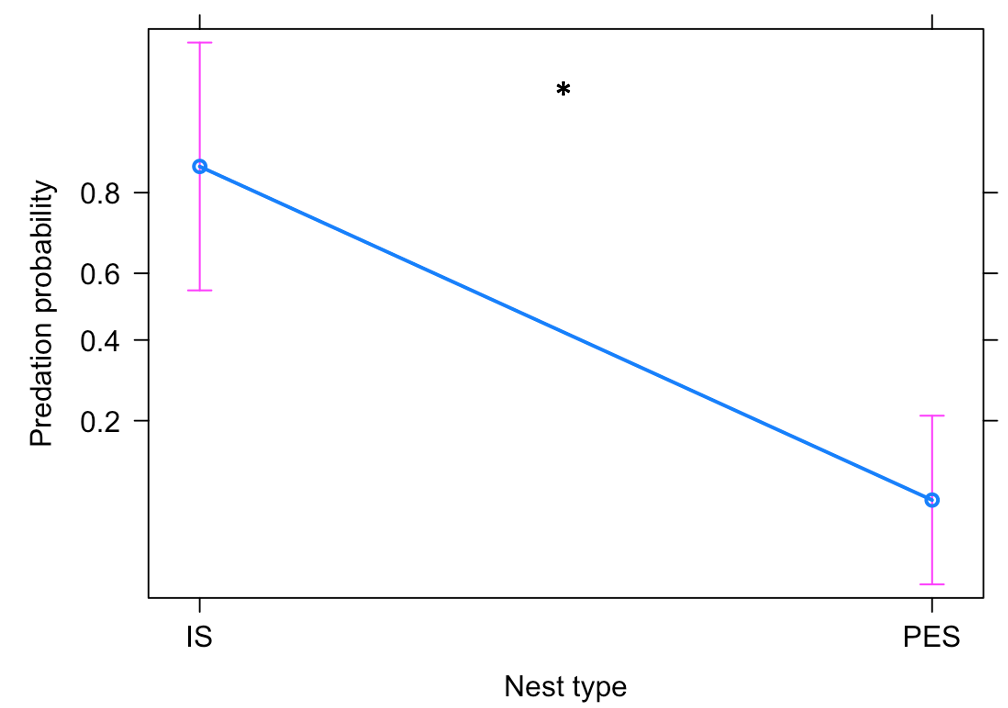And here come the results that you were looking forward to discover!
Predation
When it comes to predation, 80% of the non-protected nests were predated, while only 8.7% of the protected nests with predator-excluder systems were. Thus, the predation probability decreased significantly when the nests were protected!

Hatching success
The mean hatching success estimated by the excavations of the PES was 58%. However, we were not able to obtain an estimate of hatching success in natural nests (the non-protected ones) because most of them were predated.
Despite this, we did an assessment of 4 environmental variables on the hatching probability.

The hatching success increased significantly when the nests were relocated deeper (A) and in the “Border” beach zone instead of “Open” (C). The hatching success also increased significantly the later the relocation was done (B). Finally, the time the eggs spent exposed did not have a significant effect on the hatching success (D).
This sounds interesting, right? But how can we explain these results?